Last Updated
23/10/2025
Hungry customers aren’t searching far; they’re searching nearby. As an agency, we understand the importance of local SEO for restaurants in 2025. And with more than 46% of all Google searches centred around local intent, restaurants that fail to optimize locally are running the risk of disappearing in the noise. From Google Business Profile optimization to reputation management, local visibility can make or break your foot traffic.
That’s why we’ve put together this 10-step guide to local SEO for restaurant businesses. Each step is broken down in detail, but here’s a little secret: success starts with choosing the right keywords and amplifying your reach through the power of social media. So, stick around till the end.
It’s time to keep those seats buzzing all year long!
Local SEO matters for restaurant businesses because it enables you to connect with local customers who are actively looking for nearby dining options. Strong local SEO guarantees that your restaurant will show up in relevant search results, whether they are on Google Maps or search engine results pages, as people frequently base their restaurant searches on location.
Optimizing for local SEO can boost foot traffic, encourage reservations, and increase visibility to the people who are most likely to visit your restaurant. Additionally, location-specific content, Google Business Profile optimization, and reviews all contribute significantly to drawing in local clients who are prepared to eat out.
To effectively attract local customers and enhance your restaurant’s online presence, following a structured local SEO strategy is key. Here’s a step-by-step guide to help you optimize your restaurant for local search:
Local SEO is especially important for small business restaurants, as it helps them compete with larger chains in their local market by improving visibility and attracting more customers who are searching for nearby dining options.
We believe that understanding your audience is the first and most important step in any successful SEO strategy. You can’t optimize your website if you don’t know who you’re trying to reach. Identifying your target customers helps you create content and design a website that speaks directly to the people most likely to use your services or visit your restaurant.
Know Who You’re Serving: Think about the people who would most enjoy your restaurant or services. Are they families looking for a quick meal? Are they health-conscious individuals? Do they prefer fine dining or fast food? Knowing this will help you focus your SEO efforts on the right people.
For example, when you’re focusing on SEO for a fine dining restaurant, it’s important to recognize that your audience will be quite different from a casual dining or fast-food restaurant. The people you’re serving typically seek a higher-end dining experience, and understanding their preferences and behaviors will allow you to create an SEO strategy that speaks directly to them. Your audience will primarily include:
Affluent Professionals & Executives: They seek premium dining for business meetings or special occasions.
Couples Looking for Romantic Dining: Interested in fine dining for date nights or anniversaries.
Foodies & Connoisseurs: Passionate about gourmet food and unique dining experiences.
Corporate Groups & Event Planners: Looking for venues for business lunches or private events.
Tourists & Visitors: Seeking local, high-end dining experiences.
If you are a beginner to restaurant SEO, let’s start with understanding what keywords are and why you need them.
Keywords are the words and phrases that people type into search engines like Google when they’re looking for information, products, or services. In the context of a restaurant, keywords could be anything from “best pizza in [City]” to “vegan restaurant near me.” These search terms are crucial because they determine how easily people can find your website when they’re looking for dining options.
When selecting keywords for your restaurant SEO, it’s important to focus on long-tail and low-volume keywords, especially for local businesses. For example, this keyword “stylishly done restaurant serving fine dining” has 0 difficulty and a 200 search volume. This means it’s relatively easy to rank for, yet still has a decent amount of people searching for it.
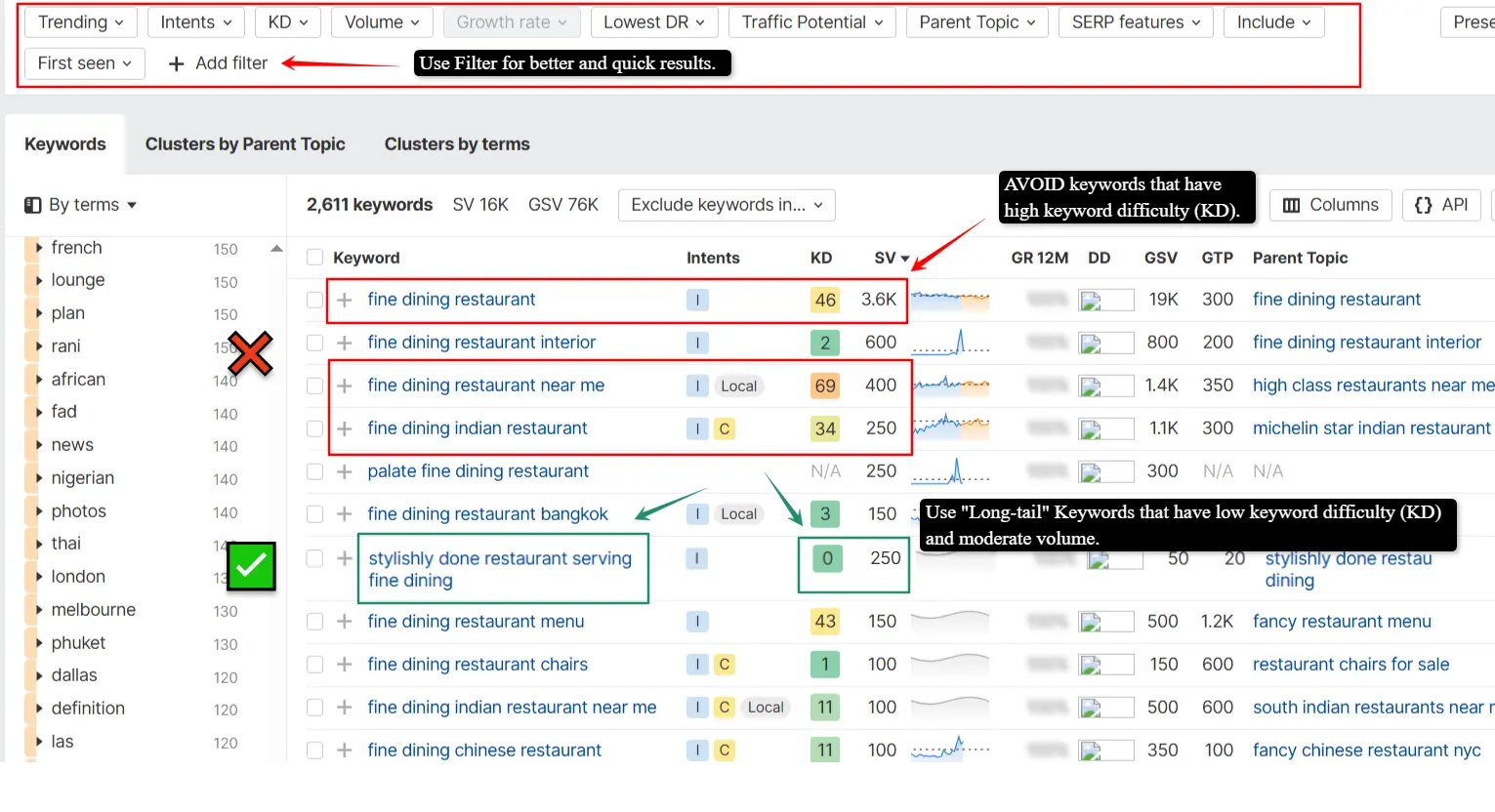
You should aim for keywords that are specific, targeted, and less competitive. By focusing on long-tail keywords like this, you can quickly rank higher and attract a more relevant audience without competing against major, high-volume keywords.
Adding “near me” keywords is essential in local SEO, especially for restaurant businesses. These keywords are used by people who are actively searching for dining options nearby, and they often have high intent to visit. For instance, when someone searches for “best fine dining near me,” they are typically looking for a place to eat right now or in the near future. By targeting these keywords, you ensure that your restaurant shows up when people are ready to make a decision, which directly translates to more foot traffic and bookings.
The importance of “near me” searches can’t be overstated. 68% of users report that these searches drive meaningful local conversions, which means they lead to actual visits or purchases. Additionally, 46% of all Google searches have local intent, highlighting how much people rely on location-based searches when they need services.
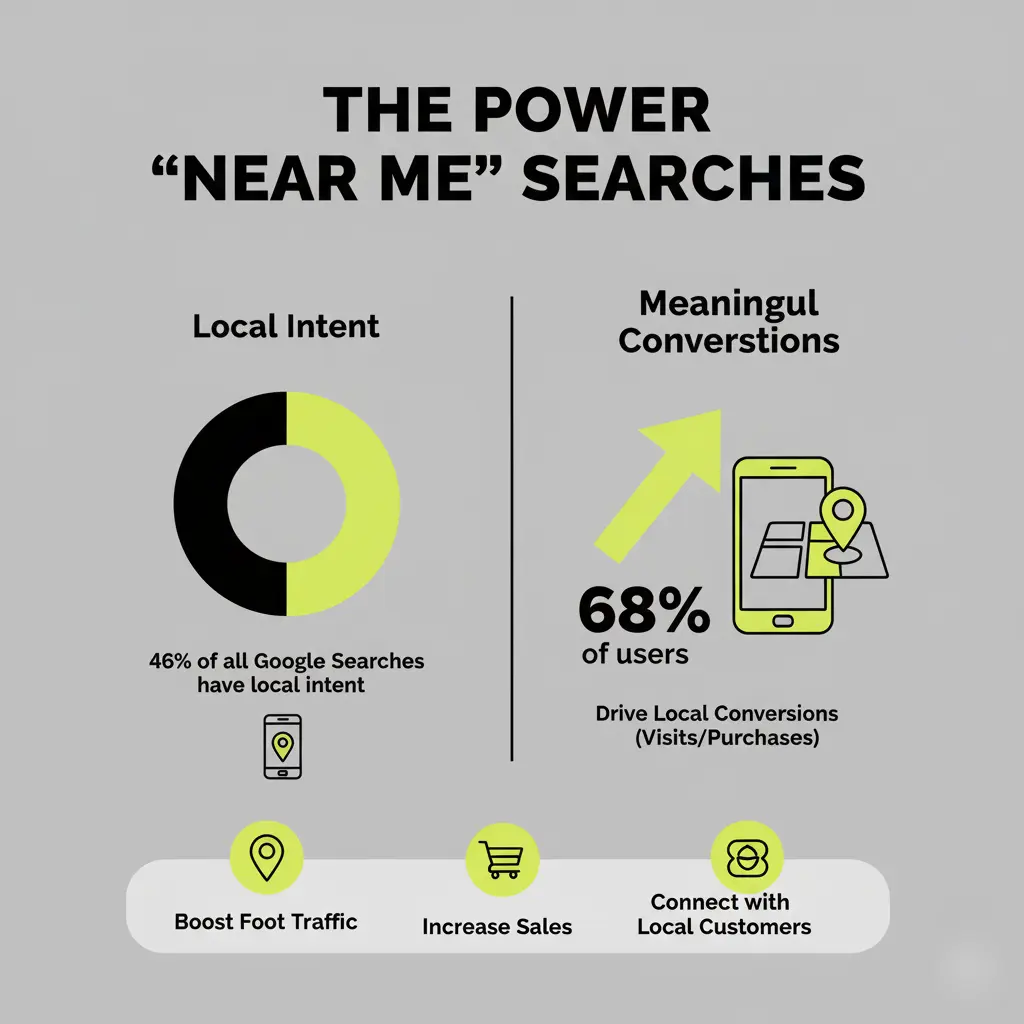
Publishing content without a plan is not effective. It’s crucial to plan your content strategy at least two months ahead to ensure consistency, relevance, and better SEO performance. Start by creating a topic cluster around your main service or restaurant offering.
A topic cluster is a group of content centered around a primary “pillar” topic. For example, let’s take the “Fine Dining Restaurant” as the pillar topic. Your content will revolve around subtopics that are closely related to this main topic, like:
Each of these subtopics can have a separate blog post, and all content will link back to your main pillar page about fine dining. This helps search engines understand the structure of your website and increases the likelihood of ranking higher.
Once you have your topic cluster, divide your content into two categories: evergreen content and trending content.
Improving your website’s SEO is an important step in making it easy for people to find your restaurant online. This is especially important for restaurant owners because customers often look for places to eat in their area, want quick information, or want to know more about specific menu items or events.
Here’s why each aspect of website SEO is key for restaurants:
More and more customers are searching for restaurants on their mobile devices, whether it’s to find a place to eat, make a reservation, or check the menu. 58% of people search for local businesses on their smartphones, and 88% of people who perform a local search on their smartphone end up visiting a related store within the same week. So if your restaurant’s website isn’t mobile-friendly, you risk losing potential customers.
A mobile-optimized site ensures that your restaurant appears correctly on all devices, providing a smooth, user-friendly experience for users. Whether they’re browsing your menu, checking your hours, or reading reviews, your mobile site needs to load quickly and look good on small screens. If it doesn’t, you might miss out on attracting walk-in customers or online reservations.
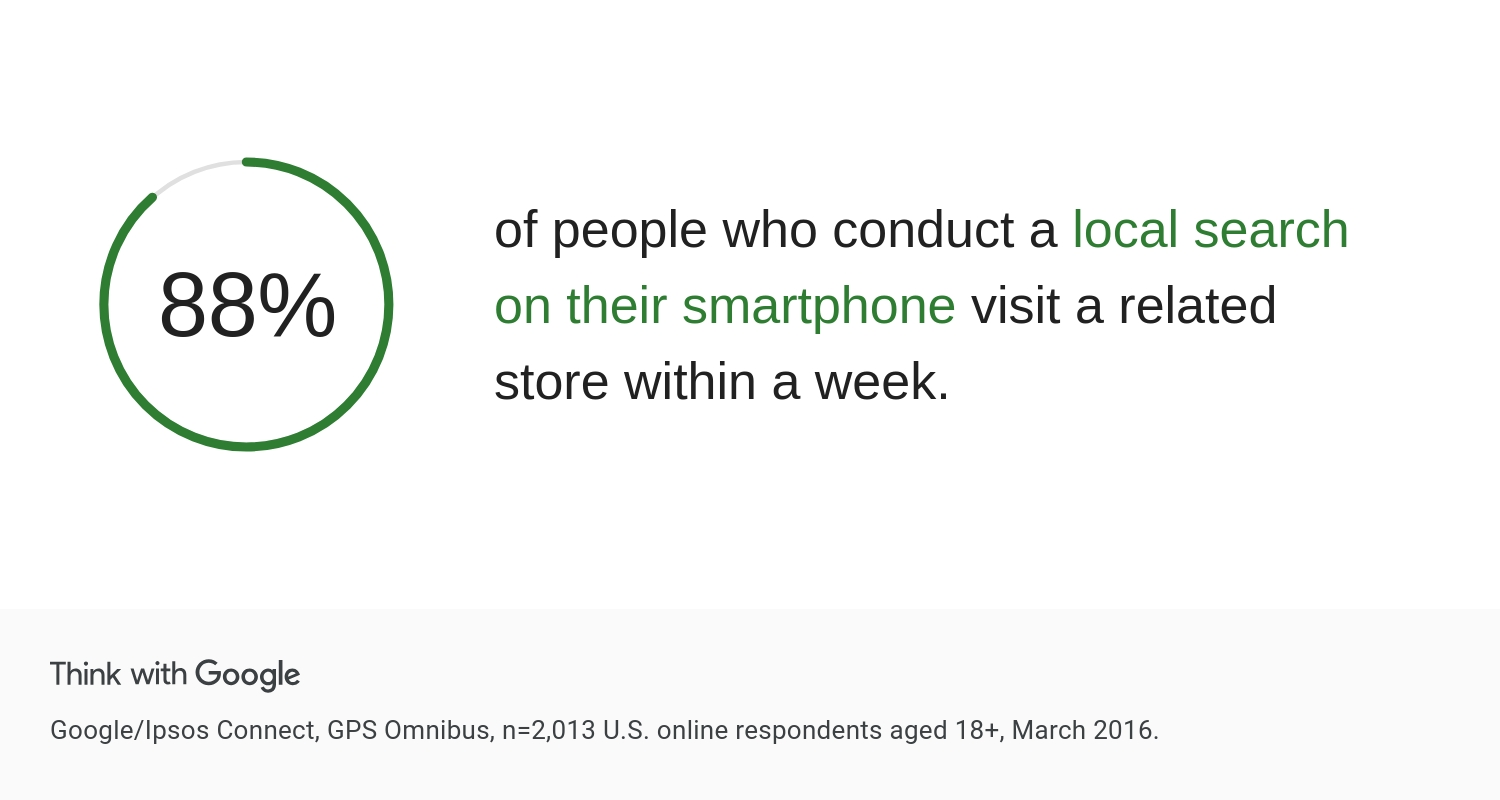
Site speed is a critical factor in both user experience and SEO rankings. For restaurant websites, a slow-loading website can frustrate customers, leading them to leave before even checking out your menu or making a reservation. Google studies show that 53% of visitors will abandon a page if it takes more than 3 seconds to load. Fast loading times improve conversion rates, as customers are more likely to stay and interact with your website.
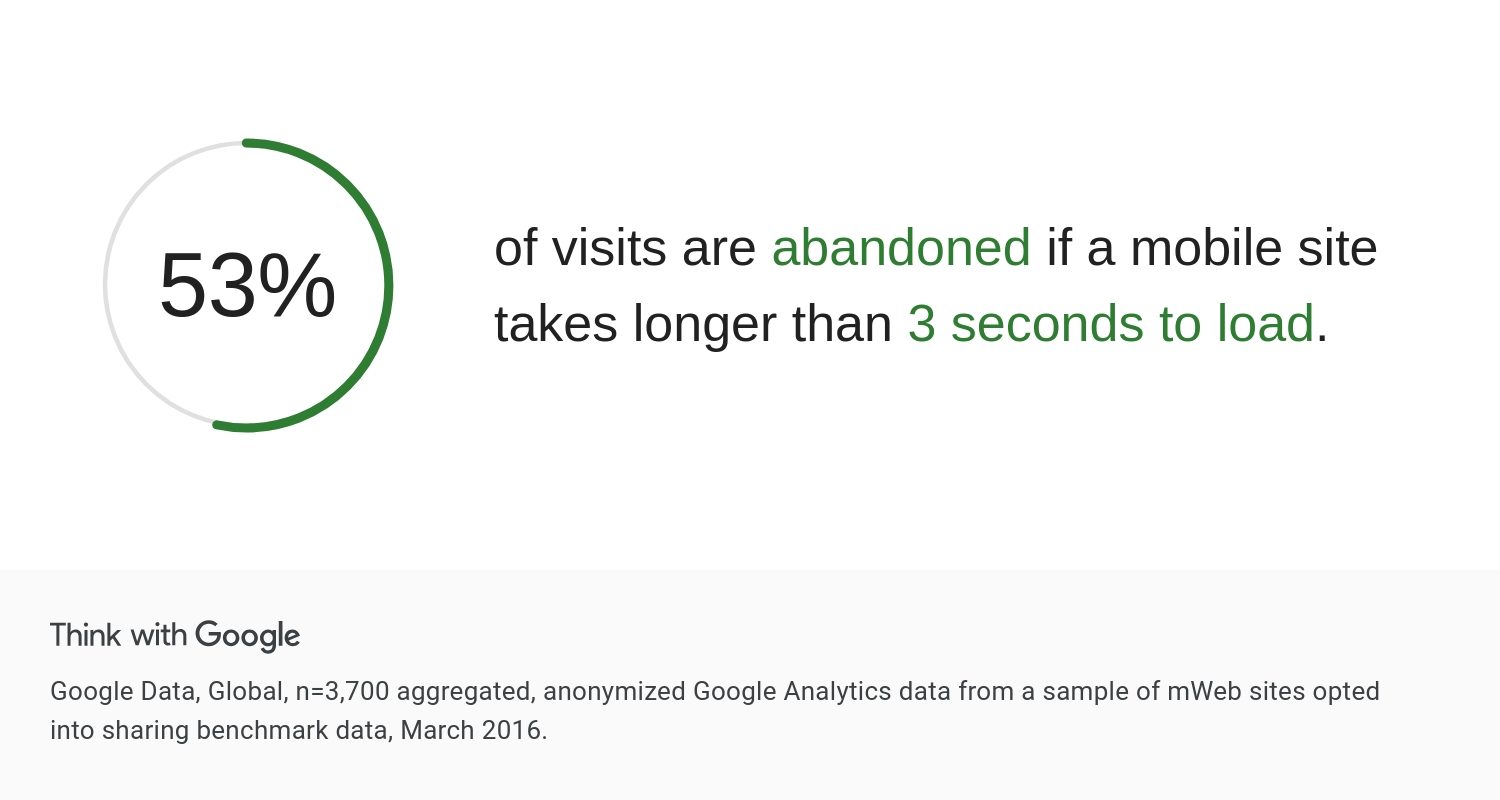
To improve speed, optimize large image files (such as photos of dishes or restaurant interior) and streamline the code of your website. A faster website also positively impacts your SEO rankings, as search engines like Google prioritize fast-loading websites in their search results.
Structured data, or schema markup, is a way to help search engines understand your content more clearly. For restaurants, this is incredibly useful. By adding schema markup to your website, you can display important information like:
For example, using menu schema markup allows search engines to display your restaurant’s menu in search results, making it easier for potential customers to see what you offer right from the search engine. You can also use review schema to show your restaurant’s average rating directly in search results, increasing trust and encouraging clicks. This not only helps with local SEO but also enhances visibility in rich snippets, which can drive more traffic to your site.
If your restaurant has more than one location, it’s important to optimize local SEO for multiple locations. It’s crucial to create unique landing pages for each location with tailored content and location-based keywords. For example, a restaurant with branches in both New York City and Brooklyn should have separate pages that focus on each area’s specific search terms. This could include:
By targeting local keywords, your restaurant will have a better chance of ranking in searches relevant to each location. This is particularly important for restaurants with multiple locations because it ensures that each branch gets the attention it deserves from local searchers. Google will see that each page is highly relevant to a specific location, improving the likelihood that it appears in local searches.
Optimizing your Google Business Profile (GBP) is one of the most powerful ways to enhance your restaurant’s local SEO and visibility in search results. It allows potential customers to quickly find essential information about your restaurant, so it’s critical to make sure your profile is complete and up to date.
By fully optimizing your Google Business Profile, you’re not only making it easier for customers to find you, but you’re also improving your chances of ranking higher in local search results and making a great first impression.
For restaurants, having accurate and consistent online listings across various platforms is a key element of local SEO. These listings help increase visibility and make it easier for potential customers to find you, whether they’re searching through Google, Yelp, TripAdvisor, or other local directories.
Beyond the major platforms, look for niche directories or local community websites where your restaurant can be listed. These could include food blogs, local chambers of commerce, or city-specific restaurant directories. Listing your business on these platforms builds local citations and adds credibility to your restaurant’s online presence.
Social media is a powerful tool for restaurant owners to engage with customers, build brand awareness, and drive traffic to their website. Here’s how to make the most of it for your restaurant’s local SEO:
Ensure that your social media profiles (Facebook, Instagram, Twitter, etc.) are fully optimized with consistent branding and contact information. This includes using your restaurant’s logo, providing accurate details like hours of operation, location, and website link. A complete profile makes it easier for customers to find you and know what your restaurant is all about.
Posting regularly is essential to keep your audience engaged. Share high-quality photos of your menu items, highlight any special events or promotions, and engage with your followers by asking questions or running polls. For example, if you have a seasonal menu or a special event like a wine-tasting night, posting about it encourages people to visit your restaurant. Engaging content not only keeps your followers interested but also encourages them to share your posts, extending your reach to new potential customers.
Make your posts more discoverable by using location tags and relevant hashtags. Geotagging your posts ensures they show up when people search for restaurants in your area, while hashtags like #bestdinnerin[city] or #veganfood[city] can attract a local audience. Studies show that posts with location tags get more engagement, which can help increase foot traffic. Be sure to research popular local hashtags and industry-specific ones to maximize visibility.
Partnering with local influencers or food bloggers can significantly boost your restaurant’s online presence. Influencers already have an established audience that trusts their recommendations, so collaborating with them allows you to reach new customers. Offer free meals or invite them to exclusive events in exchange for posts about your restaurant. This can generate user-generated content, promote your restaurant to their followers, and help build your online reputation.
By optimizing your social media profiles, posting engaging content, using location-specific tags, and collaborating with influencers, you can increase your restaurant’s visibility, engage with potential customers, and drive more traffic to your website. Social media is not just about being present; it’s about being strategic in how you use it to grow your business.
Customer reviews play a significant role in your restaurant’s online reputation and local SEO. Here’s how to leverage them effectively:
Positive reviews are a powerful way to attract new customers and improve your restaurant’s SEO rankings. Implement strategies that encourage satisfied customers to leave reviews on key platforms like Google, Yelp, and TripAdvisor. Offering incentives such as a small discount on their next visit or a free dessert can also encourage customers to leave positive feedback.
Do Google reviews help SEO? Yes, they absolutely do. Google considers the number and quality of reviews when ranking local businesses, so more positive reviews can improve your visibility in search results.
It’s crucial to regularly monitor reviews and respond to both positive and negative. Engaging with customers by thanking them for their positive feedback shows appreciation, while responding to negative reviews demonstrates that you care about customer satisfaction. A professional, empathetic response to negative feedback can turn an unhappy customer into a loyal one.
For example, if a customer had a bad experience, offering a resolution or inviting them to revisit can show that you’re committed to improving your services.
Don’t let those glowing reviews go to waste; use them to build trust and credibility. Incorporate customer testimonials and positive reviews into your website content and social media posts. Feature them on your homepage, menu pages, or create a dedicated “customer reviews” page.
Just like we’ve incorporated reviews on the homepage of Sunshine Digital Solutions, you should do the same for your restaurant’s website and social media.
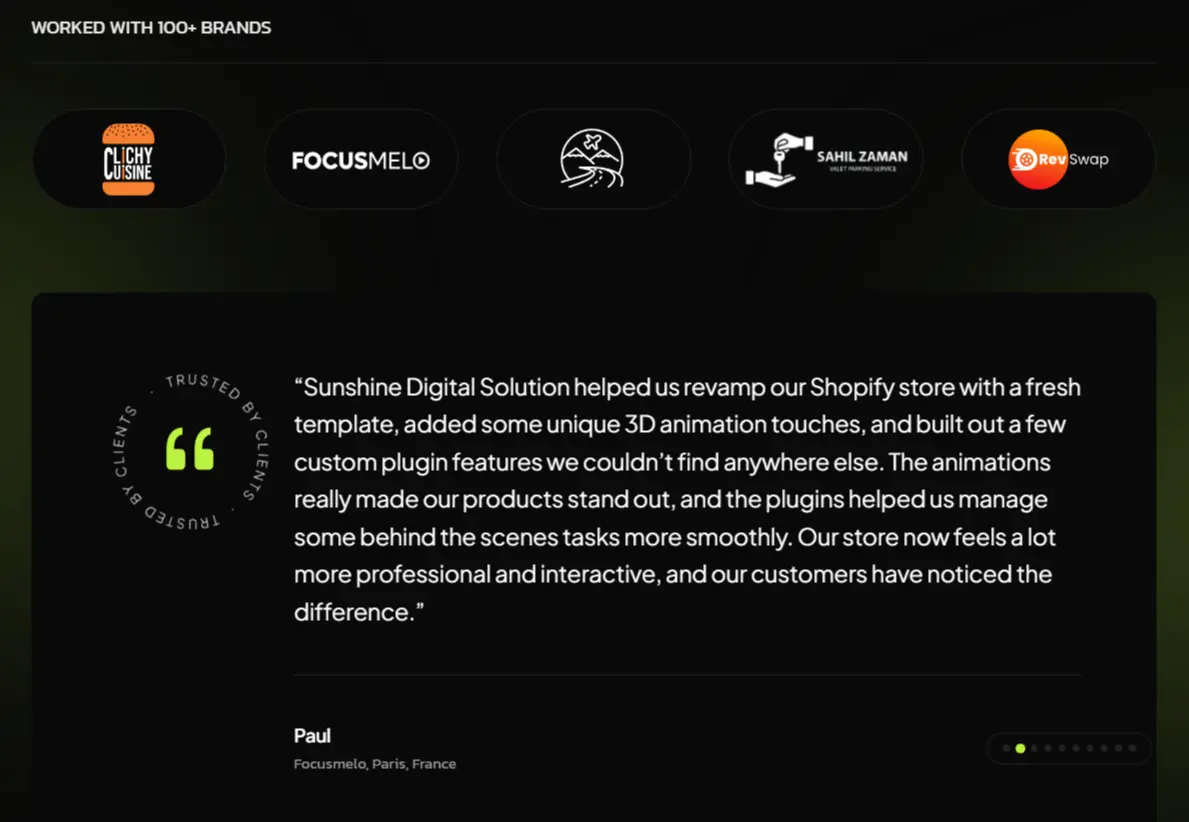
Sharing reviews on social media can also engage your followers and attract new customers who trust peer recommendations. Encouraging, responding to, and leveraging customer reviews not only helps build your restaurant’s reputation but also boosts your local SEO, making it easier for new customers to find you and trust your restaurant.
Once you’ve implemented your strategies, the next part is to monitor and analyze your SEO performance regularly to ensure your efforts are paying off and to make adjustments as needed. Here’s how to track and assess the effectiveness of your SEO:
Google Analytics is an invaluable tool for tracking your website’s performance. It provides insights into website traffic, user behavior, and conversion rates. For example, by tracking metrics like average session duration (stay time) and bounce rate, you can understand how well your site is engaging visitors.
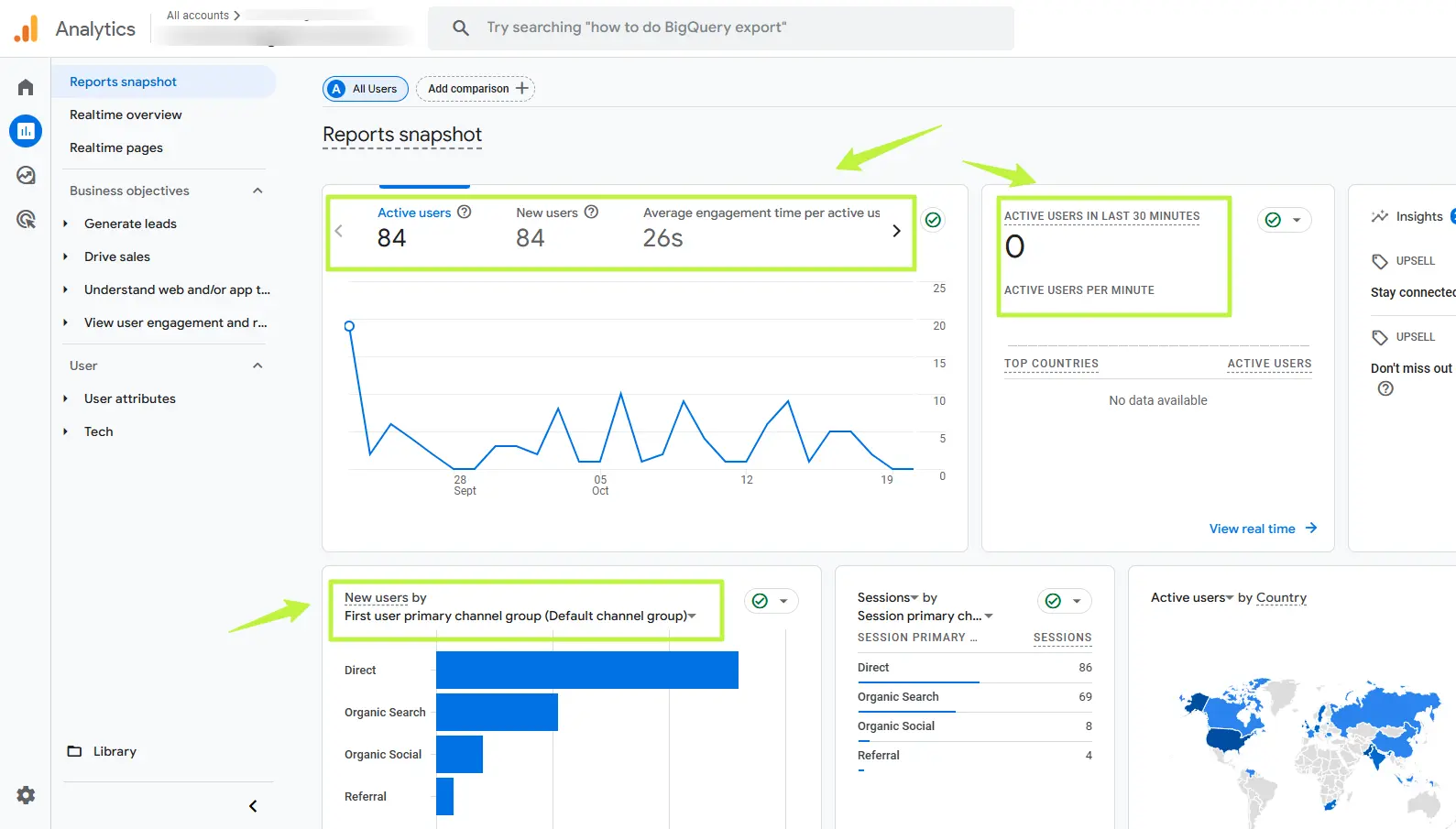
If users are spending very little time on your site (low stay time) or leaving quickly (high bounce rate), this could indicate that your content isn’t engaging enough or your website isn’t meeting their expectations. You can use these insights to improve user experience, create better content, and make adjustments to keep visitors engaged longer.
Regularly checking your keyword rankings is essential to understand which keywords are driving traffic to your restaurant’s website and which ones need improvement. Tools like SEMrush, Ahrefs, or Google Search Console can help you track where you stand in search results for your target keywords. Identify which keywords are performing well and which aren’t.
For those who are underperforming or at a “dead end,” consider revising the content around them or focusing more on higher-performing terms. This helps you fine-tune your SEO strategy and ensures you’re continuously improving your visibility.
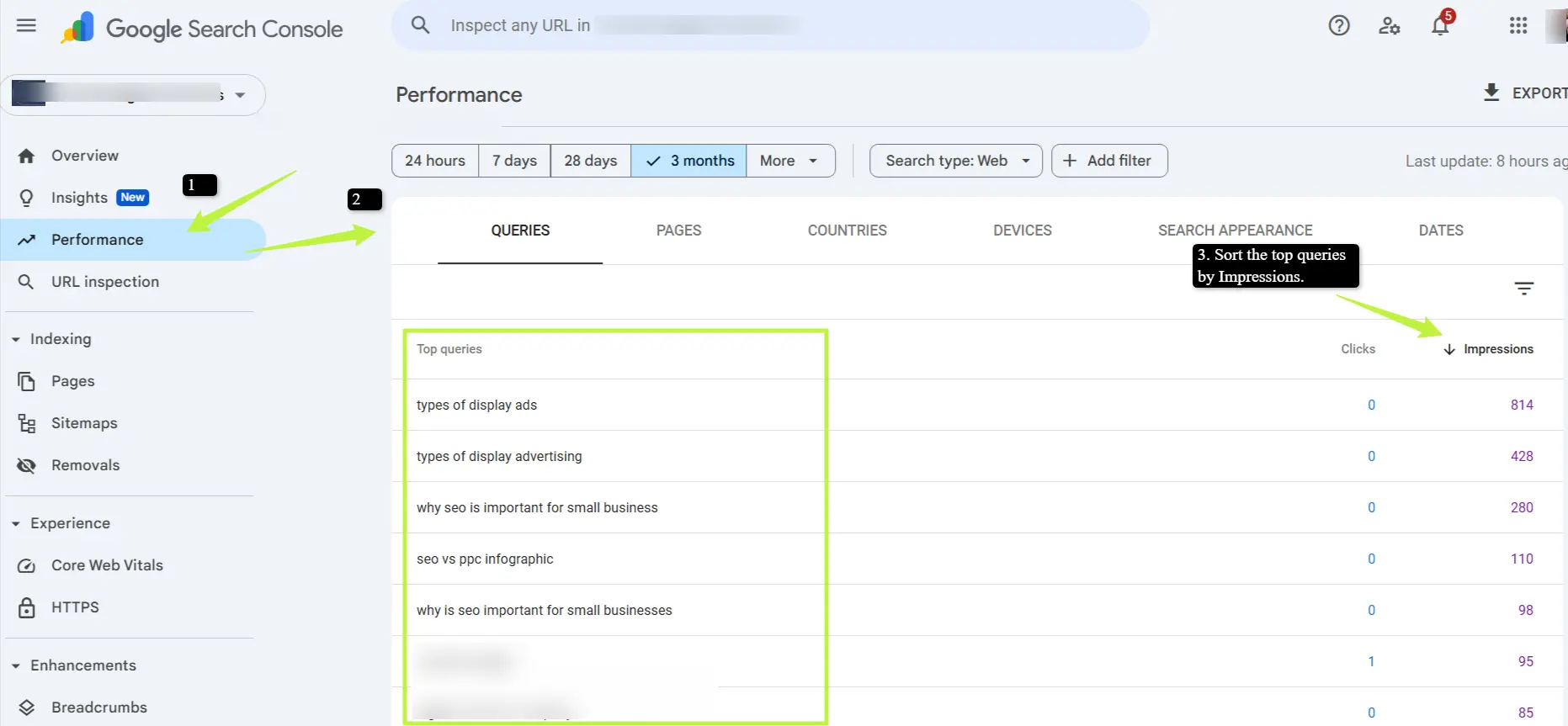
SEO audits are a vital part of maintaining a healthy website. Performing periodic SEO audits helps you identify and fix any issues that may be affecting your site’s performance, such as broken links, slow page speeds, or missing meta descriptions. Use tools like SEMrush, Ahrefs, or Screaming Frog to conduct comprehensive audits. Addressing issues like technical SEO errors or gaps in content ensures that your website is running at its best and staying optimized for search engines.
SEO can be complex, and if you’re not familiar with tracking and analyzing this data, choosing an SEO agency can be a game-changer. A professional agency will help you interpret the data, identify areas of improvement, and make data-driven decisions that will drive better results. They can also provide detailed reports and insights that can be hard to get on your own, especially for busy restaurant owners.
While organic SEO is crucial for long-term success, sometimes investing in local paid ads can give your restaurant a boost in the short term, especially in a competitive market. Platforms like Google Ads and Facebook Ads allow you to target your ads to local customers who are searching for dining options like yours or are within a specific geographic radius of your restaurant.
By running pay-per-click (PPC) ads, you can ensure that your restaurant appears at the top of search results for high-competition keywords. For example, if someone searches for “fine dining near me”, your ad could show up before the organic search results, driving immediate traffic to your website. Additionally, paid ads can help you promote special offers, seasonal events, or limited-time menu items to attract customers right when they’re most likely to make a dining decision.
Paid ads also allow for precise targeting based on factors like location, demographics, interests, and even online behavior. This ensures that your ads reach the people most likely to convert into customers.
While SEO vs PPC is often debated, combining both strategies can maximize your visibility and help you dominate local search results. SEO builds long-term success, while PPC gives you the flexibility to drive targeted traffic right away.
If you’re looking to boost your restaurant’ local seo and attract more customers through paid ads, investing in a PPC strategy tailored to your business can be a game-changer. Sunshine Digital Solutions offers PPC management services that help restaurants reach the right audience and see measurable results. Let us help you create a strategy that complements your SEO efforts and drives more customers through your doors.
Positive reviews on platforms like Google, Yelp, and TripAdvisor can improve your restaurant’s local search rankings. Responding to reviews also boosts your online reputation and encourages customer engagement.
Use location-based keywords (e.g., “best vegan restaurant in [City]”) on your website, optimize your menu page, and include information relevant to local dining trends. Also, make sure your website is mobile-friendly since most local searches are done on smartphones.
Regularly post location-specific content, engage with local customers, and use geotags and relevant hashtags like #[City]Eats on platforms like Instagram and Facebook to increase your visibility in local searches.
Local keywords are search terms that include your restaurant’s location, such as “best Italian food in [City].” Use these keywords on your website’s homepage, menu page, and in blog posts to rank higher in local search results.
We specialize in boosting restaurant visibility through targeted local SEO strategies. Our expert team can help you optimize your website, Google Business Profile, and local listings to attract more customers and drive foot traffic. Let us handle your SEO so you can focus on what you do best serving great food and creating unforgettable dining experiences. Reach out today to get started!
Partner with a team that makes your ideas impactful.

Sunshine
Digital Solutions
Full-service marketing by Sunshine Digital Solutions. We offer website & app development, AI, SEO, web content & blogging, UI/UX, and video production services from Washington to all around the globe!
